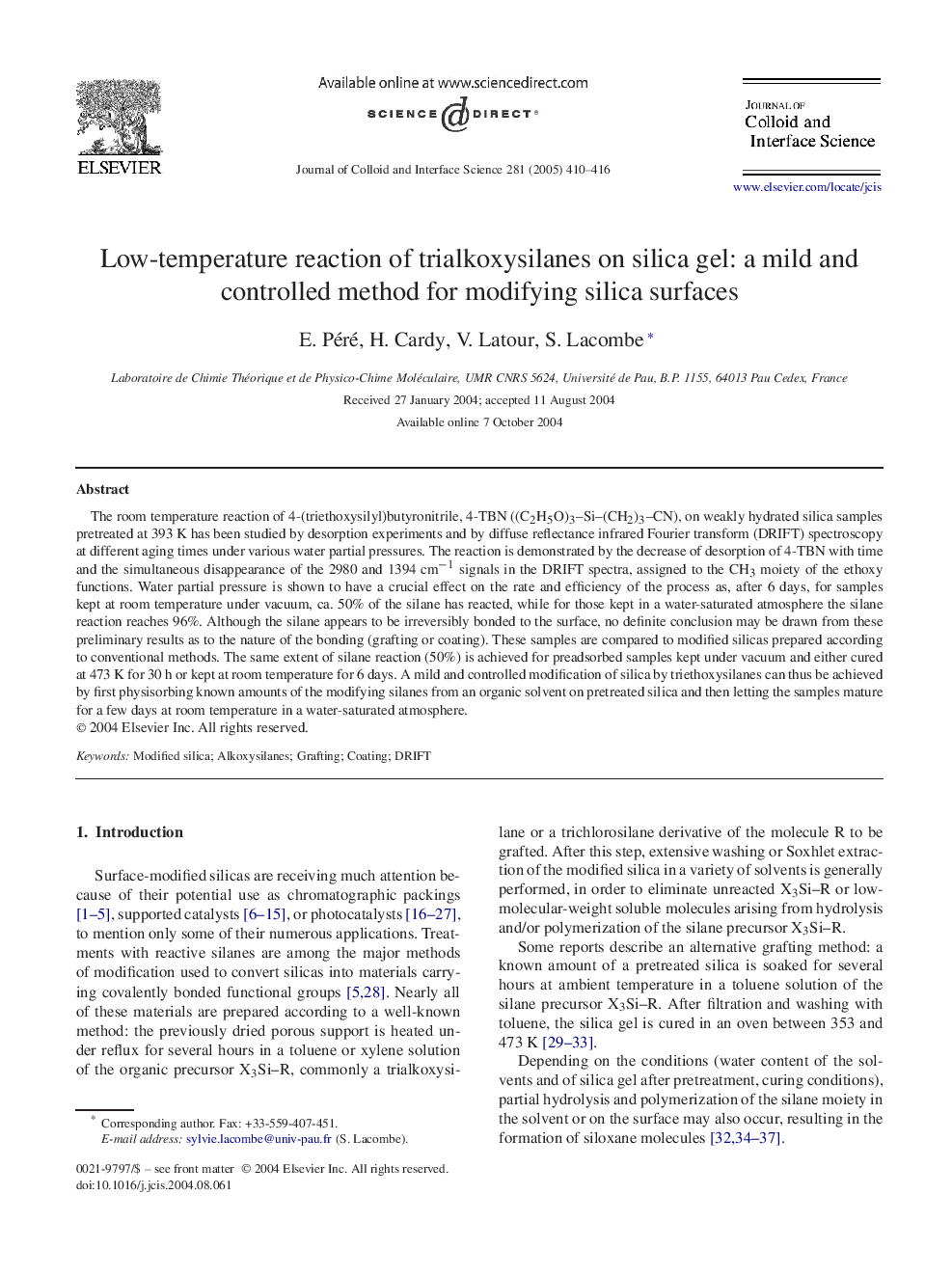| Article ID | Journal | Published Year | Pages | File Type |
|---|---|---|---|---|
| 10378346 | Journal of Colloid and Interface Science | 2005 | 7 Pages |
Abstract
The room temperature reaction of 4-(triethoxysilyl)butyronitrile, 4-TBN ((C2H5O)3Si(CH2)3CN), on weakly hydrated silica samples pretreated at 393 K has been studied by desorption experiments and by diffuse reflectance infrared Fourier transform (DRIFT) spectroscopy at different aging times under various water partial pressures. The reaction is demonstrated by the decrease of desorption of 4-TBN with time and the simultaneous disappearance of the 2980 and 1394 cmâ1 signals in the DRIFT spectra, assigned to the CH3 moiety of the ethoxy functions. Water partial pressure is shown to have a crucial effect on the rate and efficiency of the process as, after 6 days, for samples kept at room temperature under vacuum, ca. 50% of the silane has reacted, while for those kept in a water-saturated atmosphere the silane reaction reaches 96%. Although the silane appears to be irreversibly bonded to the surface, no definite conclusion may be drawn from these preliminary results as to the nature of the bonding (grafting or coating). These samples are compared to modified silicas prepared according to conventional methods. The same extent of silane reaction (50%) is achieved for preadsorbed samples kept under vacuum and either cured at 473 K for 30 h or kept at room temperature for 6 days. A mild and controlled modification of silica by triethoxysilanes can thus be achieved by first physisorbing known amounts of the modifying silanes from an organic solvent on pretreated silica and then letting the samples mature for a few days at room temperature in a water-saturated atmosphere.
Related Topics
Physical Sciences and Engineering
Chemical Engineering
Colloid and Surface Chemistry
Authors
E. Péré, H. Cardy, V. Latour, S. Lacombe,
